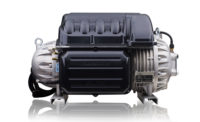The heating, ventilating, air conditioning and refrigeration (HVACR) industry is making the steady shift toward low GWP refrigerants, with decisions influenced by an evolving regulatory climate. In fact, the low GWP refrigerants market is projected to be $18 billion, according to a study released by Fact.MR, Rockville, Md.
HFCs phase-out and strict environmental regulations remain key influencing factors
According to study, penetration of hydrofluorocarbons (HFCs) continues to remain high despite growing research on its harmful impact on the environment. Taking into consideration the environmental impact of HFCs, regulations on its use have become stringent over the years. According to the study, these factors are likely to provide an impetus to the growth of low GWP refrigerants market in the near future.
An increasing number of already developed and developing countries are implementing a regulatory framework that puts a check on the production and use of HCFs. Initiatives such as the Montreal Protocol, European Union’s F-gas regulations and the US Significant New Alternatives Policy (SNAP) program continue to curtail the use of HCFs in a range of applications. The ripple effect of these initiatives and regulations bolsters the case for low GWP refrigerants, according to the study.
HVACR industrial applications hold the highest share
Refrigerants are the workhorse of the HVACR industry, and industry players are promoting the adoption of environmentally sound practices with the phase-out of some high GWP refrigerants.
The study finds that the refrigeration applications of low GWP refrigerants accounted for a 63% share in the low GWP refrigerants market revenue, equaling over $11.4 billion in 2018. As the adoption of environment-friendly alternatives to high GWP refrigerants is burgeoning in refrigeration applications, the study predicts that demand for low GWP refrigerants will continue to remain high in the foreseeable future.
However, leading manufacturers in the low GWP refrigerants market are increasing their focus on burgeoning demand for low GWP refrigerants in various other applications, including chillers.
Dramatic acceleration of HFC phase-down in Europe will create lucrative opportunities
According to the summary of HFC phase-down in Europe release by the Environmental Protection Agency, the HFC phase-down was modest during 2015-2017, however, steel was down, with the 2018 average volume of HFC available on the European market reduced to 63% of the 2015 amount.
Thereby, with the sharp decrease in HFC supply in 2018, there is potential for a significant refrigerant shortage in European markets. Leading players in the low GWP refrigerants market in Europe are aiming to capitalize on lucrative sales opportunities in the European Union by bolstering production of low as well as ultra-low GWP refrigerants in the region.
The study also projects that the low GWP refrigerants market will grow two times larger in terms of revenue to exceed $38 billion by the end of the assessment period.



